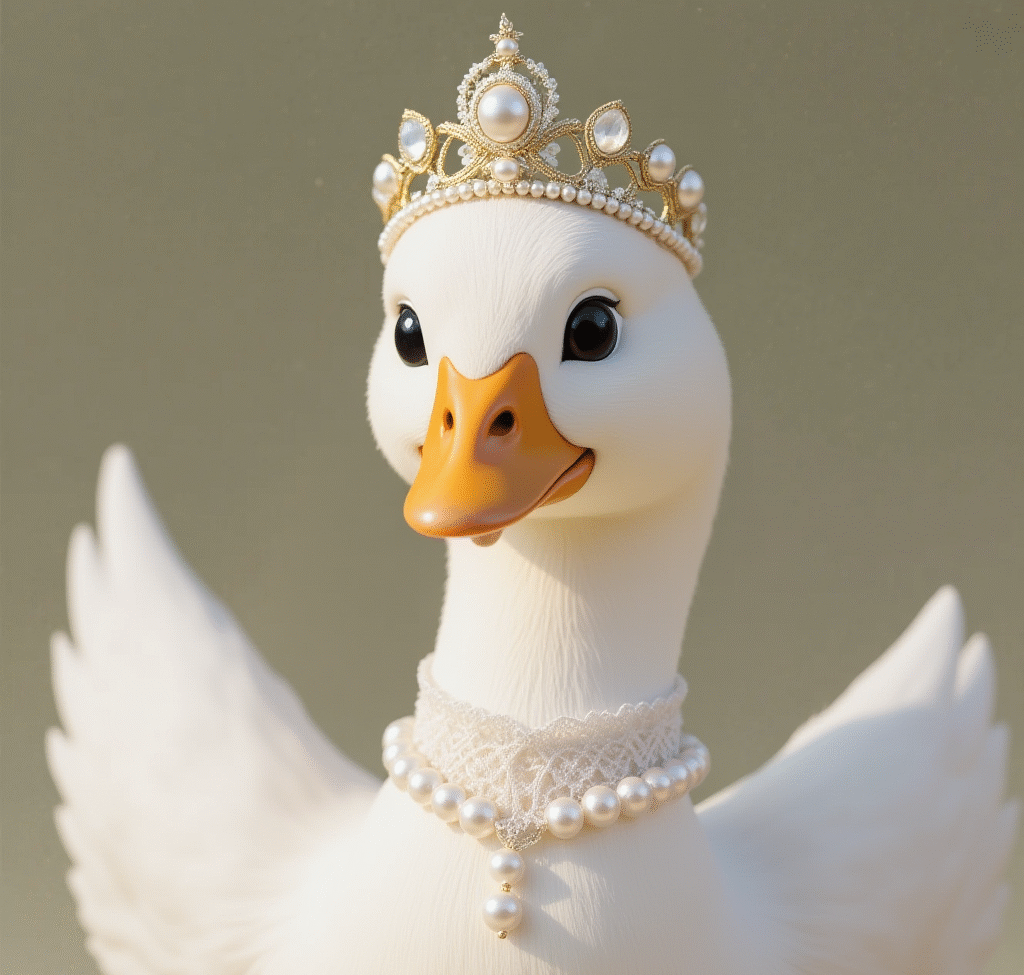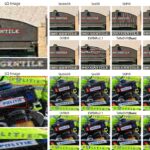
🏆Hunyuan3D 2.1: Open-Source 3D Asset Generator with PBR Textures for Realistic Visuals

Introduction to Hunyuan3D 2.1
Hunyuan3D 2.1 is an advanced, open-source 3D asset generation system developed by Tencent’s Hunyuan team. Building upon its predecessor, Hunyuan3D 2.0, this iteration introduces significant enhancements in both functionality and accessibility, aiming to revolutionize the process of creating high-fidelity 3D models.
What Is Hunyuan3D 2.1?
Hunyuan3D 2.1 is a state-of-the-art 3D generation model that transforms images into detailed, photorealistic 3D assets. Unlike traditional methods that require extensive manual modeling, this system automates the creation of 3D shapes and textures, making it accessible to a broader range of users, from independent developers to large studios.
Key features include:
- Fully Open-Source Framework: Provides complete model weights and training code, allowing developers to audit, retrain, or extend the model for various applications.
- Physically-Based Rendering (PBR) Texture Synthesis: Generates realistic textures that simulate light interactions, such as metallic reflections and subsurface scattering, enhancing the visual quality of 3D models.
- Enhanced Geometric Precision: Offers improved accuracy in shape generation, resulting in more detailed and realistic 3D models.
- Multi-Platform Support: Compatible with Windows, macOS, and Linux, making it accessible to a wide range of users.
- Advanced Texture Quality: Supports high-resolution textures up to 4K, providing sharp and detailed surface rendering.
Who Can Benefit from Hunyuan3D 2.1?
- Game Developers: Easily generate 3D assets for game environments and characters.
- Virtual Reality (VR) Designers: Create immersive 3D worlds with realistic textures.
- 3D Artists and Animators: Produce high-quality models for animation and visual effects.
- Researchers and Educators: Utilize the open-source framework for academic purposes and teaching.
- Hobbyists and Indie Developers: Access powerful tools without the need for extensive resources.
Which Technologies Power Hunyuan3D 2.1?
Hunyuan3D 2.1 integrates several advanced technologies:
- Diffusion Models: Utilized for generating high-quality 3D shapes and textures.
- Flow-Matching DiT Blocks: Enhance generation speed and accuracy.
- Geometric-Aware UV Mapping: Improves texture alignment and detail.
- CLIP-Based Semantic Alignment: Ensures that generated models align with input descriptions.
- Turbo Series and FlashVDM Techniques: Accelerate shape generation, achieving high precision in seconds.
Why Does Hunyuan3D 2.1 Matter?
Hunyuan3D 2.1 democratizes the creation of high-quality 3D assets by:
- Reducing Entry Barriers: Enabling users without extensive 3D modeling expertise to create professional-grade models.
- Accelerating Development: Streamlining the asset creation process, saving time and resources.
- Fostering Innovation: Providing an open platform for experimentation and development of new applications.
- Enhancing Realism: Delivering models with lifelike textures and details, suitable for various industries.
In summary, Hunyuan3D 2.1 represents a significant advancement in 3D asset generation, offering powerful tools that are both accessible and versatile. Whether you’re a developer, artist, or educator, this system provides the capabilities to bring your 3D creations to life with unprecedented ease and realism.

Figure: Overview of Hunyuan3D 2.1’s material generation framework.
🏗️ Hunyuan3D 2.1 Architecture
Hunyuan3D 2.1 is a sophisticated two-stage generative model designed for high-fidelity 3D asset creation. It comprises:
- Shape Generation: Utilizes a flow-matching Diffusion Transformer (DiT) model to generate detailed 3D meshes from input images. This model is trained on a vast dataset to capture intricate geometric features.
- Texture Generation: Employs a Physically-Based Rendering (PBR) pipeline to synthesize realistic textures, including metallic reflections and subsurface scattering, ensuring photorealistic surface details.
The system is fully open-source, with complete model weights and training code released to the public, fostering transparency and community-driven development.
⚖️ Comparison with Other 3D Generation Models
| Feature | Hunyuan3D 2.1 | TripoSR | Wonder3D |
|---|---|---|---|
| Shape Generation | Flow-matching DiT | Feed-forward techniques | Feed-forward techniques |
| Texture Quality | PBR (92.07 CLIP-I Score) | RGB-based | RGB-based |
| Open-Source | Yes | No | No |
| Geometric Accuracy | High (ULIP-T: 0.0774) | Moderate | Moderate |
| Texture Realism | High | Moderate | Moderate |
| Community Support | Extensive | Limited | Limited |
Hunyuan3D 2.1 outperforms many existing models in terms of texture realism and geometric accuracy, thanks to its advanced PBR pipeline and flow-matching DiT architecture.
🔧 Technical Comparison: Hunyuan3D 2.1 vs. TripoSR vs. Wonder3D
| Feature | Hunyuan3D 2.1 | TripoSR | Wonder3D |
|---|---|---|---|
| Architecture | Flow-matching Diffusion Transformer (DiT) with Mixture-of-Experts (MoE) layers | Feed-forward neural networks | Transformer-based models |
| Texture Generation | Physically-Based Rendering (PBR) pipeline simulating light interactions | RGB-based texture synthesis | RGB-based texture synthesis |
| Geometric Accuracy | ULIP-T: 0.0774, ULIP-I: 0.1395, Uni3D-I: 0.3213 | ULIP-T: 0.0767, ULIP-I: 0.1225, Uni3D-I: 0.3129 | ULIP-T: 0.0735, ULIP-I: 0.1183, Uni3D-I: 0.3195 |
| Texture Realism (CLIP-I Score) | 92.07 | 86.5 | 86.5 |
| Open-Source | Fully open-source with complete model weights and training code | Not open-source | Not open-source |
| Hardware Optimization | Optimized for 12 GB GPUs, suitable for consumer-grade hardware | Requires high-end GPUs for optimal performance | Requires high-end GPUs for optimal performance |
| Export Formats | OBJ, FBX, GLB, USDZ with embedded PBR maps | OBJ, FBX | OBJ, FBX |
| Integration & Extensibility | Supports ComfyUI, Blender plugin, Gradio app, and custom pipelines | Limited integration options | Limited integration options |
| Community Support | Extensive community-driven development and support | Limited community support | Limited community support |
🔍 Key Highlights
- Architecture: Hunyuan3D 2.1 employs a flow-matching Diffusion Transformer (DiT) enhanced with Mixture-of-Experts (MoE) layers, enabling scalable and fine-grained mesh generation.
- Texture Generation: The introduction of a Physically-Based Rendering (PBR) pipeline in Hunyuan3D 2.1 allows for realistic light interactions, such as metallic reflections and subsurface scattering, resulting in photorealistic textures.
- Geometric Accuracy: Hunyuan3D 2.1 achieves superior geometric accuracy with ULIP-T and Uni3D-I scores of 0.0774 and 0.3213, respectively, outperforming TripoSR and Wonder3D.
- Texture Realism: The CLIP-I score of 92.07 indicates a significant improvement in texture realism over previous models.
- Open-Source: Hunyuan3D 2.1 is fully open-source, providing complete model weights and training code, fostering innovation and community-driven development.
- Hardware Optimization: Designed for 12 GB GPUs, Hunyuan3D 2.1 delivers high-quality meshes without the need for data-center resources, making it accessible for home rigs and indie studios.
- Export Formats: Supports multiple export formats, including OBJ, FBX, GLB, and USDZ, with embedded PBR maps, ensuring seamless integration into various platforms.
- Integration & Extensibility: Offers extensive integration options with tools like ComfyUI, Blender, and Gradio, and supports custom pipelines, enhancing its versatility.
- Community Support: The open-source nature of Hunyuan3D 2.1 has led to an extensive community-driven development and support ecosystem.
🔓 Open Source Details
Hunyuan3D 2.1 is a fully open-source 3D asset generation system developed by Tencent. It is designed to convert 2D images into high-fidelity 3D models with photorealistic textures. The system integrates a Diffusion Transformer (DiT) for shape generation and a Physically-Based Rendering (PBR) pipeline for texture synthesis. The model weights and training code are publicly available, allowing developers to fine-tune and extend the model for various applications.
🖥️ Minimum Hardware and Software Requirements
Hardware Requirements
| Component | Minimum Specification | Recommended Specification |
|---|---|---|
| CPU | 8+ cores (Intel i7/i9 or AMD Ryzen 7/9) | 16+ cores (Intel i9 or AMD Ryzen 9) |
| GPU | NVIDIA RTX 2060 (8GB VRAM) | NVIDIA RTX 3080 (12GB VRAM) or higher |
| RAM | 16GB | 32GB or more |
| Storage | 50GB SSD | 200GB SSD or more |
| Operating System | Windows 10/11 (64-bit), Ubuntu 20.04/22.04, macOS 12+ | Same as minimum |
Software Requirements
- Python: Version 3.8–3.11
- CUDA: Version 11.4 or higher
- PyTorch: Compatible with your CUDA version
- Git: Latest stable version
- Visual Studio Build Tools: Required for compiling C++ components on Windows
⚙️ Installation Guide
Step 1: Clone the Repository
Open your terminal or command prompt and execute the following commands:
git clone https://github.com/Tencent-Hunyuan/Hunyuan3D-2.1.git
cd Hunyuan3D-2.1
Step 2: Set Up a Virtual Environment
Create and activate a Python virtual environment:
python -m venv hunyuan3d-env
# On Windows:
hunyuan3d-env\Scripts\activate
# On macOS/Linux:
source hunyuan3d-env/bin/activate
Step 3: Install Dependencies
Upgrade pip and install required packages:
pip install --upgrade pip
pip install -r requirements.txt
Step 4: Install Hunyuan3D
Run the setup script to install Hunyuan3D:
python setup.py install
Step 5: Verify Installation
Check the installation by importing the module:
python -c "import hunyuan3d; print(hunyuan3d.__version__)"
Step 6: Download Pre-trained Models
Download the necessary pre-trained models:
python -m hunyuan3d.utils.download_models
Step 7: Run the Application
Start the Gradio interface:
python gradio_app.py
Access the interface by navigating to http://localhost:8080 in your web browser.
📂 GitHub Repository
Access the official Hunyuan3D 2.1 GitHub repository here:
👉 https://github.com/Tencent-Hunyuan/Hunyuan3D-2.1
The repository contains the source code, model weights, and detailed documentation to assist you in setting up and utilizing Hunyuan3D 2.1.
🔌 Integration with ComfyUI
ComfyUI is a node-based interface that simplifies complex AI workflows. With dedicated support for Hunyuan3D 2.1, it allows users to generate 3D assets through a visual interface.
✅ Features:
- Multi-view image generation for accurate 3D modeling.
- Texture refinement and UV unwrapping nodes.
- Support for exporting models in formats like
.glband.obj.
⚙️ Setup:
- Clone the ComfyUI repository.
- Install dependencies: bashCopyEdit
pip install -r requirements.txt - Download the Hunyuan3D 2.1 model files.
- Place them in the appropriate model directory.
- Launch ComfyUI and load the Hunyuan3D 2.1 workflow.
For detailed guidance, refer to the ComfyUI Hunyuan3D Workflow.
🧪 Python API Integration
For developers seeking programmatic control, Hunyuan3D 2.1 provides a Python API, facilitating integration into custom pipelines.
🔧 Example Usage:
pythonCopyEditfrom hy3dgen.shapegen import Hunyuan3DDiTFlowMatchingPipeline
from hy3dgen.texgen import Hunyuan3DPaintPipeline
# Initialize pipelines
shape_pipeline = Hunyuan3DDiTFlowMatchingPipeline.from_pretrained('tencent/Hunyuan3D-2')
paint_pipeline = Hunyuan3DPaintPipeline.from_pretrained('tencent/Hunyuan3D-2')
# Generate 3D mesh from image
mesh = shape_pipeline(image='input_image.png')[0]
# Apply textures
textured_mesh = paint_pipeline(mesh, image='texture_reference.png')
# Export the final model
textured_mesh.export('output_model.glb')
Ensure your environment supports CUDA for optimal performance. For more details, visit the Hunyuan3D API Documentation.hunyuan3d.net
🧰 Integration with Blender
Blender 4.3 integrates seamlessly with Hunyuan3D 2.1, allowing users to generate 3D models directly within the application.
✅ Features:
- Direct generation of 3D models from text or images.
- Options to adjust resolution and guidance scale.
- Export models in standard formats for use in other platforms.
⚙️ Setup:
- Install Blender 4.3.
- Install the Hunyuan3D 2.1 plugin.
- Configure the plugin with your model files.
- Generate and refine 3D models within Blender.
For more information, refer to the Vset3D Blender Integration Guide.vset3d.com+1vset3d.com+1
🌐 Web-Based Interfaces
For users preferring a browser-based experience, platforms like Fal.ai offer web interfaces to interact with Hunyuan3D 2.1.fal.ai
✅ Features:
- No installation required.
- Submit images and receive 3D models directly in the browser.
- API access for integration into web applications
⚙️ Usage:
- Visit the Fal.ai platform.
- Upload your input image.
- Receive and download the generated 3D model.
For API integration, refer to the Fal.ai API Documentation.fal.ai
🧩 Summary Table
| Platform | Integration Method | Key Features | Ideal For |
|---|---|---|---|
| ComfyUI | Node-based UI | Visual workflow, multi-view support | Artists, designers |
| Python API | Programmatic | Full control, batch processing | Developers, automation |
| Blender | Plugin | In-app generation, direct editing | 3D modelers, animators |
| Fal.ai | Web interface/API | Browser-based, no installation | Quick tests, web applications |
🌐 Real-World Applications of Hunyuan3D 2.1
1. Character Design and Prototyping
A designer transformed a photo of Matty Matheson from The Bear into a retro action figure using Hunyuan3D 2.1. The process involved creating a vinyl toy-style image, generating a 3D model in a T-pose, and refining it in Blender. The resulting model was suitable for 3D printing and animation, demonstrating the system’s utility in character design and prototyping. janisheck.com
2. Product Design for 3D Printing
A Reddit user shared their workflow for designing a soap dish intended for 3D printing. They utilized Hunyuan3D 2.1 to generate a base mesh from an AI-generated concept, which was then refined in Blender. The final design addressed practical considerations like size, structural integrity, and water drainage, showcasing the system’s application in product design. reddit.com
3. Consumer Product Visualization
In a comparison between Hunyuan3D 2.0 and TRELLIS, Hunyuan3D 2.0 generated a highly realistic 3D model of a Dior handbag from an image. The model exhibited detailed textures and accurate lighting, making it suitable for use in e-commerce, marketing, and virtual try-on applications. dgwave.net
🖼️ Sample Outputs
Here are some examples of 3D models generated using Hunyuan3D 2.1:

- Humming Bird: A detailed 3D model of a hummingbird, showcasing intricate textures and realistic geometry.
- Raspberry Pi Pico: An accurate 3D representation of the Raspberry Pi Pico microcontroller, useful for educational and prototyping purposes.
- Sundae: A stylized 3D model of an ice cream sundae, demonstrating the system’s versatility in creating various objects.
- Monstera Deliciosa: A lifelike 3D model of a Monstera Deliciosa plant, highlighting the system’s capability in botanical modeling.
- Grand Piano: A detailed 3D model of a grand piano, suitable for use in virtual environments and simulations.
🔗 Explore More
To experience Hunyuan3D 2.1 firsthand, you can visit the official platforms:
🧠 Conclusion
Hunyuan3D 2.1 marks a significant advancement in AI-driven 3D asset generation, offering a fully open-source framework with production-ready PBR textures. Its integration of high-fidelity geometric precision and realistic material simulation positions it as a powerful tool for various industries, including gaming, virtual reality, and industrial design. By providing complete model weights and training code, it democratizes access to advanced 3D generation capabilities, fostering innovation and collaboration within the developer and research communities.
🔮 Future Work
Looking ahead, the development of Hunyuan3D 2.5 is underway, promising further enhancements in both shape and texture generation. The introduction of the LATTICE shape foundation model and an upgraded PBR pipeline aims to achieve even higher levels of detail and realism, narrowing the gap between AI-generated and handcrafted 3D models. These advancements are expected to expand the applicability of Hunyuan3D in fields such as digital twins, architectural visualization, and cinematic production. arxiv.org
📚 References
- Hunyuan3D 2.1: From Images to High-Fidelity 3D Assets with Production-Ready PBR Material.
- Hunyuan3D 2.5: Towards High-Fidelity 3D Assets Generation with Ultimate Details.
- Hunyuan3D 2.0: Scaling Diffusion Models for High Resolution Textured 3D Assets Generation.
- Hunyuan 3D-2.1 — Open-Source PBR 3D Generation by Hunyuan3D.
- Hunyuan3D 2.1: Open-Source 3D Asset Generation System.

